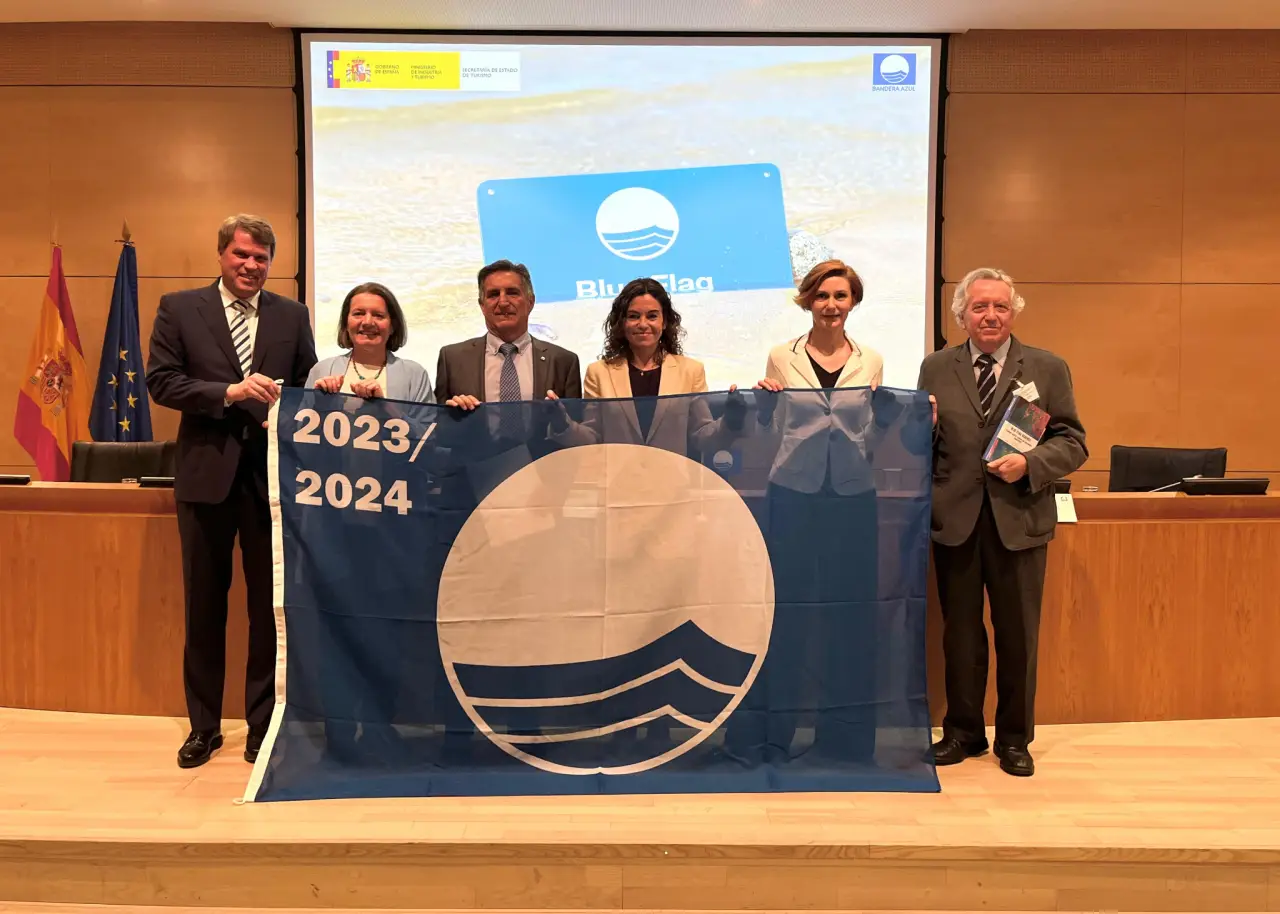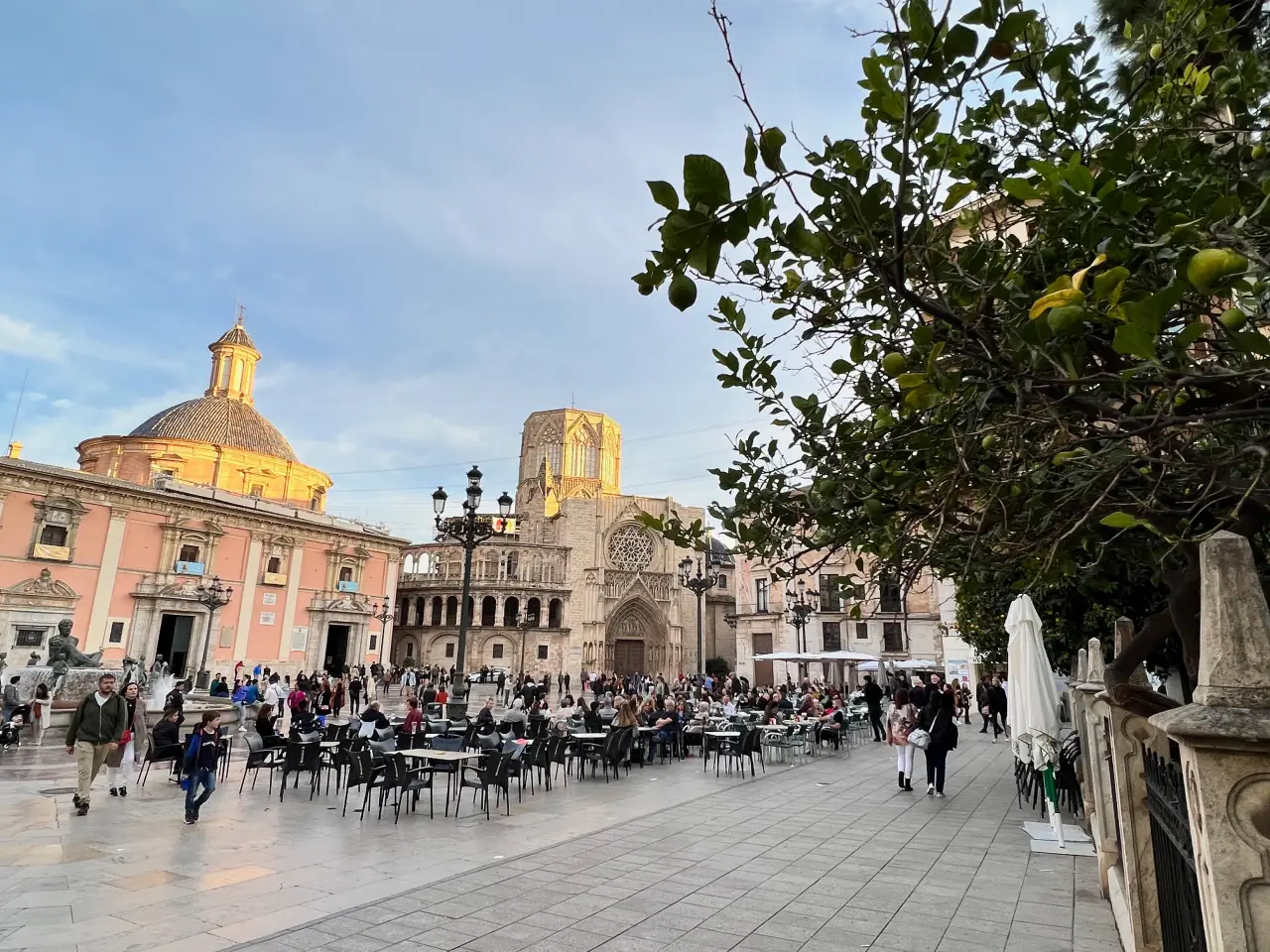This summer, a Blue Flag, symbolizing excellence in water quality, beach services, and safety, will fly over 638 beaches in Spain, maintaining the country as the global leader in this recognition for 30 consecutive years.
In her debut role as the Secretary of State for Tourism, Rosario Sánchez highlighted how the Blue Flags are a source of national pride, symbolizing the collective effort to protect and cherish the Spanish coastlines renowned for their pristine conditions.
On Tuesday, May 7, the Association of Environmental and Consumer Education (Adeac), which spearheads this initiative, released the 2024 figures, revealing an increase of 18 blue flags compared to last year.
Specifically, the count for 2024 includes 638 for beaches, 102 for marinas, and 7 for tourist boats, marking a slight increase in all categories. Notably, there are eight new beaches receiving the distinction and 33 beaches regaining it.
Spain continues to lead globally, hosting the most blue flag beaches among 52 participating countries. It ranks ahead of Greece and Turkiye, who are second and third, respectively.
In the category of marinas, Spain holds the third position with 102 blue flags, trailing behind the Netherlands and France.
Valencian Beaches Lead in Spain
Regionally, the Valencian Community leads in Spain with 159 blue-flag beaches, followed by Andalusia with 156, and Galicia with 125.
Noteworthy is Navarra, joining the program for the first time with its inaugural blue flag at Bahía de Lerate beach.
However, four autonomous communities including Castile-La Mancha, Castile and León, Aragon, and La Rioja have not yet to receive any blue flags.
Other regions vary in the number of blue flags awarded: the Canary Islands and the Balearic Islands boast 60 and 42 respectively, Murcia has 34, while Asturias has 17. The distribution continues with Cantabria at 10, Extremadura at 11, and both the Basque Country and Melilla with 4 each. Ceuta and Madrid round out the list with 2 and 1 blue flags respectively.
Additionally, seven municipalities have held their blue flag status since the program’s inception in 1987, showcasing an impressive 38 years of uninterrupted recognition. These include Alcalá de Xivert, Alicante, Calpe, Campello, Cullera, Gandía, and Oleiros.
In 2024, the program has also acknowledged 88 interpretation centers as Blue Centres across various regions, enhancing the educational aspect of beach conservation and environmental awareness.
Spain’s commitment to pristine beach conditions is further exemplified in its variety of offerings, including several nudist beaches that uphold the high standards required for blue flag certification. For instance, in the Valencian Community, which boasts 159 blue-flag beaches, and in Majorca, part of the Balearic Islands with 42 blue flags, visitors can also find beautifully maintained nudist beaches (Majorca, Valencia).
These beaches cater to a niche but appreciative audience, emphasizing privacy and natural beauty in line with environmental standards. Such offerings enrich the Spanish coastal experience, drawing a diverse group of beachgoers and promoting inclusivity along Spain’s celebrated shores.

















